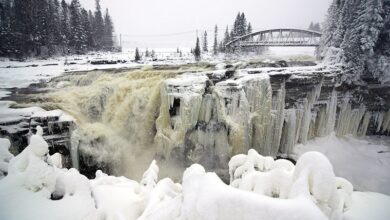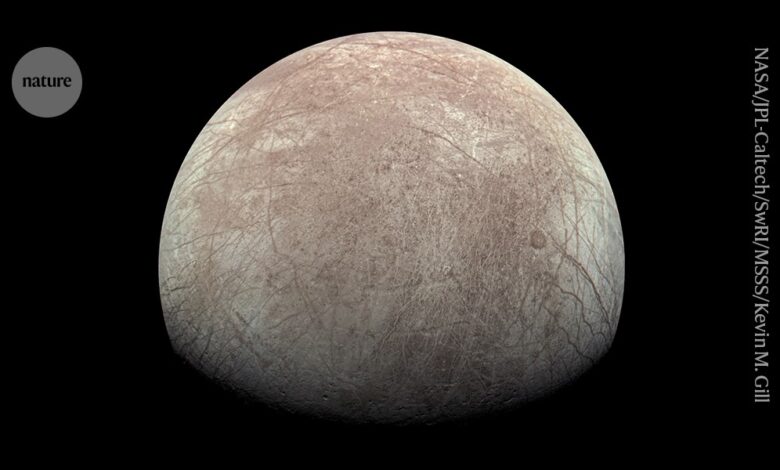
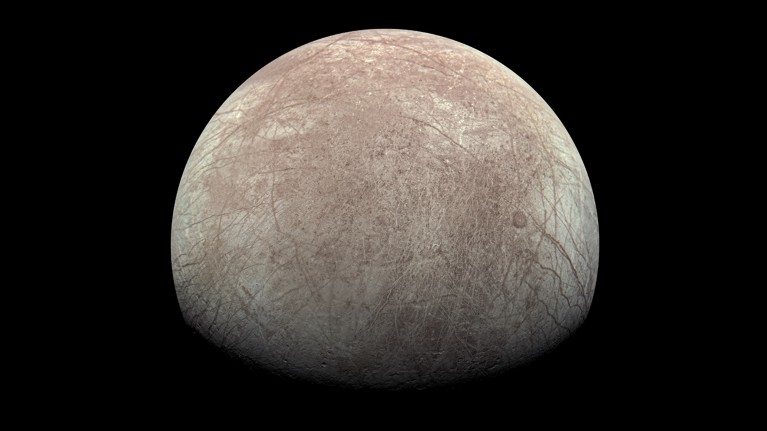
Jupiter’s moon Europa is thought to hide a saltwater ocean beneath its icy surface.Credit: NASA/JPL-Caltech/SwRI/MSSS/Kevin M. Gill
A SpaceX rocket lifted off from Cape Canaveral in Florida today, carrying with it NASA’s US$5-billion dream of finding hints of life on a distant moon. The mission — the most ambitious hunt for life beyond Earth since NASA began exploring Mars decades ago — will now voyage towards Jupiter to investigate a vast ocean buried under the icy crust of its moon Europa.
NASA approves mission to search for a hidden ocean on Jupiter’s moon Europa
In the coming weeks, the Europa Clipper craft will make crucial manoeuvres in space, such as deploying radar antennas, to prepare for studying the moon. “We’re watching through our fingers with excitement,” says Kathleen Craft, a planetary scientist at the Johns Hopkins University Applied Physics Laboratory in Laurel, Maryland. “Everything needs to go right.”
If it does, the spacecraft will reach Jupiter in 2030 and begin whizzing past Europa, making dozens of fly-bys. Skimming above the moon’s icy surface, it will aim to answer some of the most profound questions in astrobiology — including whether Europa’s ocean contains chemical nutrients and other energy sources capable of sustaining life1.
Mission scientists have been careful to say that Clipper, named for the nineteenth-century merchant ships that sailed Earth’s oceans, is not hunting for life; instead, its goal is to determine whether Europa has the ingredients for life. If the mission shows that Europa is habitable, that discovery would drastically expand the chances of finding life on icy worlds in other solar systems. “Studying Europa tells us not to limit ourselves,” says Lynnae Quick Henderson, a planetary scientist at NASA’s Goddard Space Flight Center in Greenbelt, Maryland.
‘Chaos’ terrain
For centuries, Europa, one of Jupiter’s largest moons, was not considered a promising place to look for life. But in the mid-1990s, NASA’s Galileo mission flew close to the moon and spotted geological wonders. It had patches of ‘chaos’ terrain, which looked like fields of icebergs frozen in place, and enormous ridges in its surface that appeared to be spray-painted with reddish material. Galileo also measured a strange sloshing beneath Europa’s surface — evidence of a buried salty ocean2.
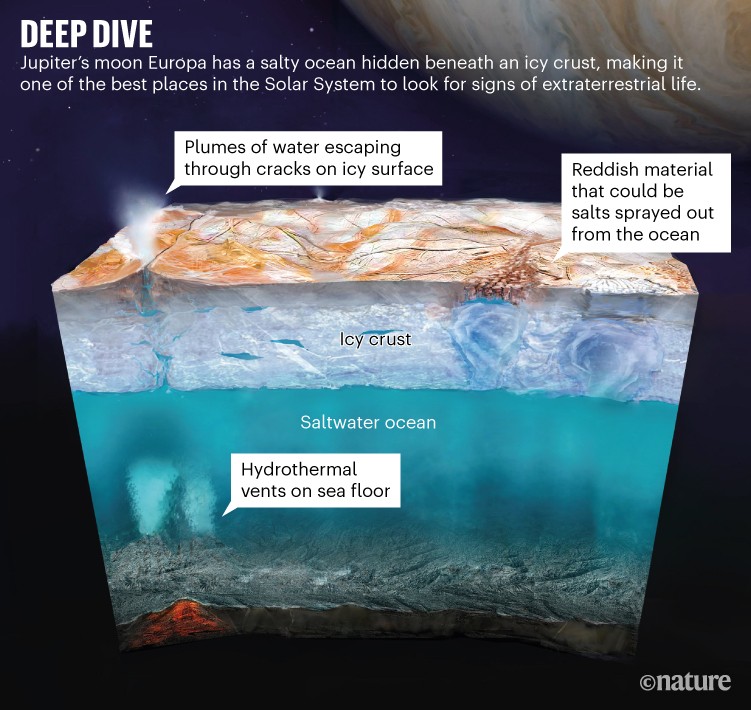
Source: NASA/JPL-Caltech
Scientists want Clipper to confirm that discovery and learn more about the hidden body of water. “We’ll be able to describe what that habitable environment is like,” says Ingrid Daubar, a planetary scientist at Brown University in Providence, Rhode Island, who works on Clipper for NASA’s Jet Propulsion Laboratory (JPL) in Pasadena, California.
Europa’s ocean, which is thought to contain more than twice the volume of all of Earth’s oceans, formed billions of years ago thanks to Jupiter’s gravitational pull. That force generates enough frictional heat to keep the ocean liquid even though temperatures at the moon’s surface never exceed around –140 °C. The icy shell on top of the ocean is predicted to be at least 20 kilometres thick3, and the water beneath it probably has a depth of 60–150 kilometres (see ‘Deep dive’). Clipper will confirm the thickness of both, helping to illuminate the ocean’s dynamics, says Elizabeth Spiers, a planetary oceanographer at the Woods Hole Oceanographic Institution in Massachusetts.
The ingredients for life
On Earth, volcanic rocks on the seafloor can interact with ocean water to create chemical reactions that generate energy and allow microbes, worms and other creatures to thrive. Similar deep-sea vents might exist on Europa.
Another way in which life might be sustained on Europa is through the energy the moon receives from Jupiter’s powerful radiation. The planet bombards Europa with charged particles powerful enough to break chemical bonds in the moon’s icy crust and produce small molecules such as hydrogen and oxygen4.
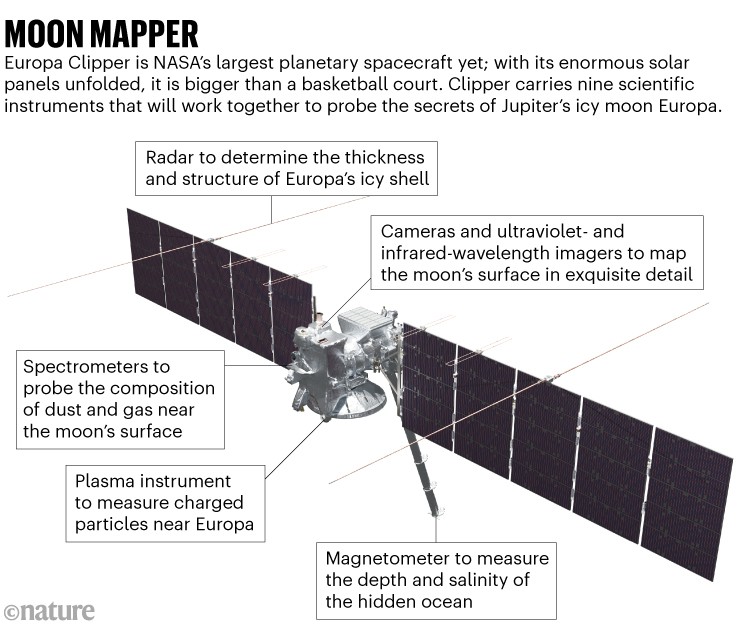
Source: NASA/JPL-Caltech
And then there are the icy ridges, coated with reddish material, which might be salts and sulfate compounds from beneath Europa’s surface. “If that’s from the ocean, it will be an exciting place to look” for habitable signs, says Cynthia Phillips, a planetary geologist at JPL. Clipper’s instruments (see ‘Moon mapper’) will study the material to learn more about the composition of the buried ocean.
Finally, Clipper will also look for geysers, or plumes, spurting liquid into space through cracks in Europa’s ice shell. Saturn’s moon Enceladus has many of these plumes, which contain hydrogen, carbon, silica grains and other life-friendly ingredients. Researchers have glimpsed hints of similar plumes on Europa; if Clipper spots one, it might be able to fly through the spray and analyse the contents.
Challenges ahead
Over the four-plus years Clipper is expected to spend studying Europa, it will fly past the moon 49 times, getting as close as 25 kilometres from the surface5. Its cameras will photograph Europa in fivefold more detail than Galileo’s cameras did.
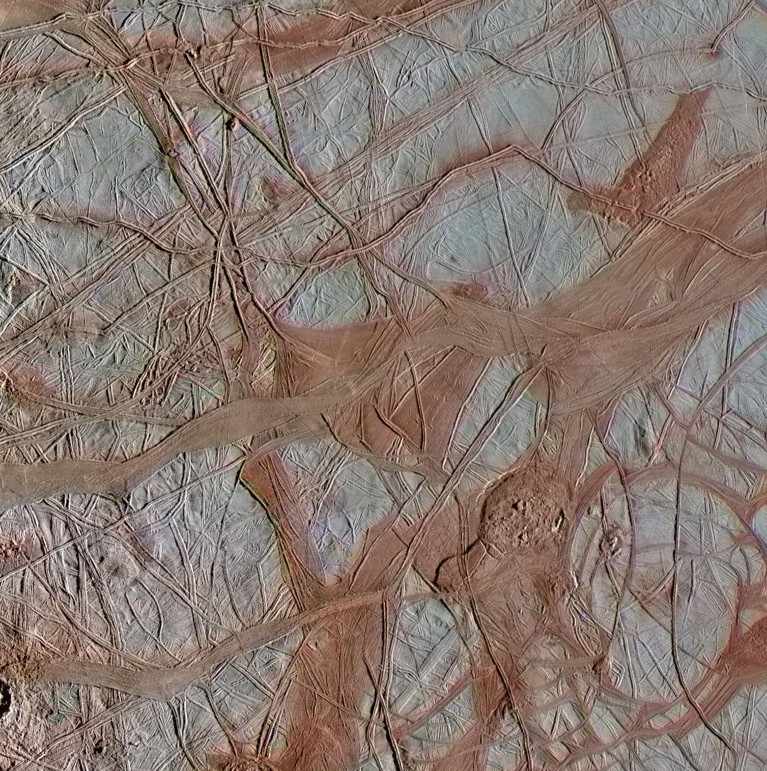
This close-up image of Europa, taken by NASA’s Galileo spacecraft in 1998, shows the ridges that criss-cross its icy surface.Credit: NASA/JPL-Caltech/SETI Institute
But many technical challenges remain for the mission. One is surviving Jupiter’s powerful radiation belts; NASA intends Clipper to avoid those as much as possible by travelling on an elliptical orbit. The threat from the belts caused a panic in May, when NASA engineers learnt that more than 1,000 electronic transistors already installed in Clipper might fail in the face of strong radiation. The discovery triggered a months-long investigation; NASA now says it is confident the transistors will be all right.
Clipper will explore Europa at around the same time that the European Space Agency’s JUICE spacecraft is exploring the region, primarily studying two of Jupiter’s other moons, Ganymede and Callisto. (Jupiter has 95 moons.) “Between the two [missions], we’ll understand the whole system a lot better,” says Ines Belgacem, a planetary scientist at the European Space Astronomy Centre in Madrid.
At the end of Clipper’s mission, the plan is to smash it into Ganymede, which is also thought to have a buried ocean, but with ice much thicker than Europa’s, theoretically protecting that moon’s waters from contamination. And with that, the voyage to explore Europa’s “vast and beckoning seas”, as they have been described by US poet laureate Ada Limón, will come to an abrupt end.
Source link



